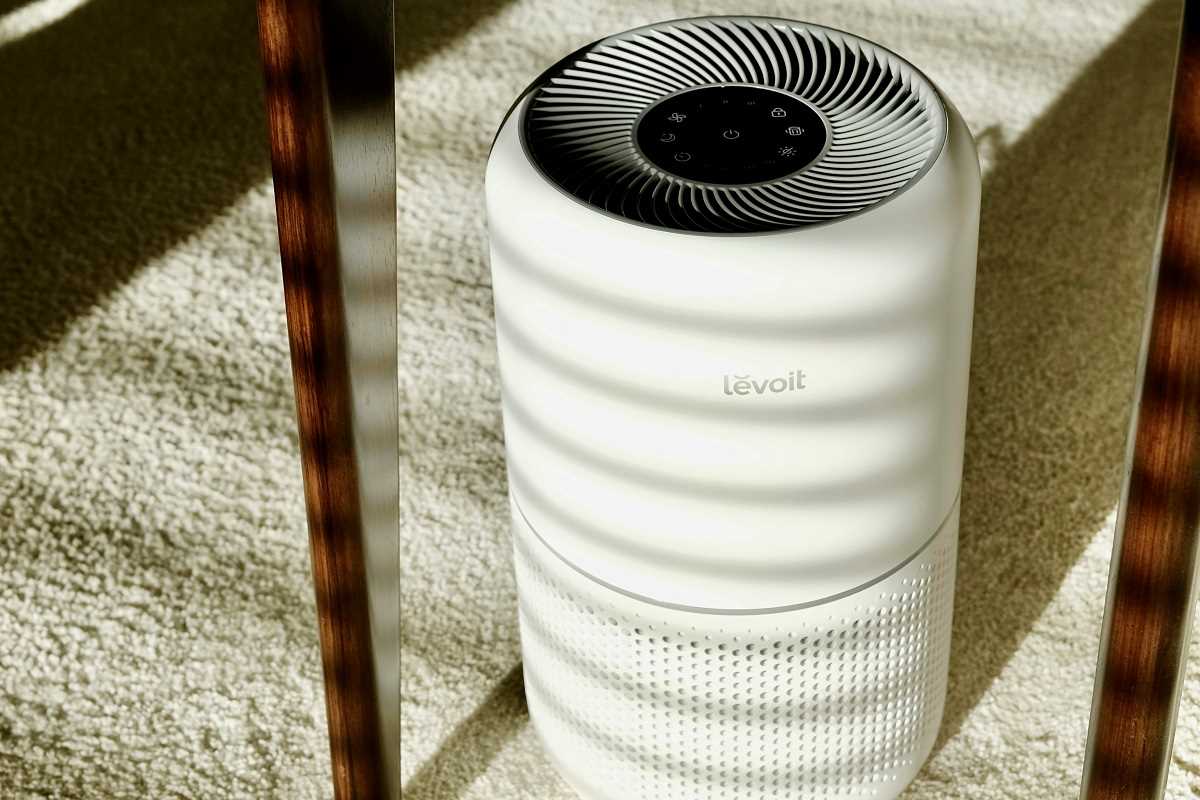The air you breathe inside your home is more important than you might realize. On average, people spend around 90% of their time indoors, where air quality can often be worse than outside. Dust, pet dander, mold spores, chemicals from cleaning products, and even outdoor pollutants can build up inside your house, potentially causing respiratory issues, headaches, and worsening conditions like asthma or allergies.
The good news? Technology has stepped up to help us breathe easier—literally. With advanced smart devices, you can monitor and improve the air quality inside your home effortlessly. From purifying and circulating air to detecting sneaky pollutants, these gadgets are game-changers for healthier living.
Let’s explore why indoor air quality is crucial, how smart devices can tackle the problem, and what to consider when choosing the best ones for your home.
Why Indoor Air Quality Matters
Clean indoor air isn’t just about comfort; it directly affects your health. Poor air quality can lead to several short-term and long-term health problems, including:
- Allergies and asthma flare-ups.
- Fatigue, headaches, and dizziness.
- Irritation of the eyes, nose, and throat.
- Serious repercussions over time, such as respiratory diseases or heart problems.
And it’s not just about physical health—air quality can also affect your sleep and focus. Ever woken up groggy or struggled through a work-from-home day in a stuffy room? That’s poor indoor air at play.
Meet Your Indoor Air Assistants: Advanced Smart Devices
Here’s how advanced smart devices can help you take control of your indoor air quality and create a healthier living environment.
1. Smart Air Purifiers - Your First Line of Defense
Air purifiers are classics in the air quality game, but smart air purifiers take it to the next level. They use sensors to detect pollutants like dust, allergens, and volatile organic compounds (VOCs). Many models automatically adjust their settings based on the air quality conditions in the room.
How They Work:
- Air is drawn in through a filtration system. HEPA filters capture fine particles like dust, pollen, and smoke, while activated carbon filters absorb odors and chemicals. Some advanced models even have UV-C light to kill bacteria and viruses.
Benefits:
- Remove up to 99.97% of airborne pollutants.
- Help manage allergies, asthma, and other respiratory conditions.
- Reduce indoor odors (bye-bye, fish dinner smell).
Pro Tip for Choosing One:
Look for a purifier with a CADR (Clean Air Delivery Rate) appropriate for the room size. Connectivity features, like app or voice control via Alexa or Google Home, are also handy so you can monitor air quality right from your phone.
2. Air Quality Monitors - Know Exactly What’s in the Air
Ever wish you could see what’s floating in the air around you? Air quality monitors do just that. These compact devices track pollutants like particulate matter (PM2.5 and PM10), carbon dioxide, humidity, and even temperature.
How They Work:
- Built-in sensors take real-time measurements of various air quality parameters.
- Many devices connect to your smartphone, showing detailed feedback and trends over time.
Benefits:
- Provide insights so you know when it’s time to ventilate or purify.
- Detect harmful gases and allergens that might normally go unnoticed.
- Help you identify pollution sources (maybe it’s time to replace that shabby carpet or cut down on candles).
Pro Tip for Choosing One:
Pick a monitor with multiple sensors for a holistic view of air quality. Bonus points if it integrates with other smart home devices like purifiers or thermostats to automate fixes.
3. Smart Thermostats - Control Temperature AND Airflow
Smart thermostats aren’t just for keeping you cozy in winter or cool in summer; they also help regulate airflow and control humidity—two critical factors for maintaining better air quality.
How They Work:
- Sensors detect temperature and humidity levels in your home.
- They adjust airflow through your HVAC system to keep air fresh and moving. Some models even work with air quality monitors to sync actions for optimal results.
Benefits:
- Prevent mold growth with proper humidity levels.
- Work alongside purifiers and ventilation systems to support air circulation.
- Save money and energy by optimizing HVAC systems.
Pro Tip for Choosing One:
Look for a thermostat that works with your HVAC system and offers compatibility with air monitoring devices or your existing smart home ecosystem.
4. Smart Humidifiers/Dehumidifiers - Balance is Key
Humidity is a major player in indoor air quality. Too much moisture breeds mold and dust mites, while too little leads to dry skin, irritated sinuses, and respiratory discomfort. Smart humidifiers and dehumidifiers help strike the perfect balance.
How They Work:
- Humidifiers add mist into the air if the humidity drops too low.
- Dehumidifiers suck out excess moisture when levels rise too high, especially in basements or during sticky summers.
Benefits:
- Safer, balanced humidity levels promote better respiratory health.
- Reduced risk of mold, which triggers allergies and asthma.
- Added comfort, especially during dry winter months.
Pro Tip for Choosing One:
Choose a device with programmable settings and adjustable humidity thresholds. Look for features like auto shut-off and the ability to pair with other air monitoring gadgets.
Benefits of Using Smart Air Quality Devices
By incorporating these devices into your home, you can enjoy a range of advantages beyond just cleaner air.
- Convenience: Many devices come with apps or voice assistant compatibility, allowing you to monitor and control settings without lifting a finger.
- Healthier Living: Improved air quality can lead to fewer allergy symptoms, better focus, and even deeper, more restful sleep.
- Energy Efficiency: Smart devices often optimize their usage, cutting down on electricity and saving you money over time.
- Eco-Friendly: High-quality filters and efficient designs mean less waste and a smaller environmental footprint.
Tips for Choosing the Right Devices for Your Home
Not all smart devices are created equal, so here are a few tips to make sure you’re picking the right ones for your needs.
- Know Your Priorities:
- Struggle with allergies? A smart air purifier with a HEPA filter is a must.
- Live in a humid climate? A smart dehumidifier will prevent mold growth.
- Curious about indoor pollutants? Start with an air quality monitor.
- Check Compatibility:
- Make sure your new devices can integrate with your existing smart home system or favorite voice assistant.
- Think About Room Size:
- A tiny purifier won’t do much in a large living room, so check specifications to ensure the device covers the square footage you need.
- Consider Maintenance Cost:
- Some devices, like purifiers, need regular filter replacements. Factor that into your budget when choosing a model.
- Test the App Features:
- Since many of these devices connect to your phone, the app interface can make or break the user experience. Look for models with intuitive apps offering detailed insights into air quality.
Improving your air quality goes beyond just staying comfortable—it’s an investment in your family’s health and well-being. By pairing advanced tools with smarter choices, you can feel confident knowing the air in your home truly supports the healthy, happy life you deserve. Breathe easy. You’ve got this (and now, so does your home).
 (Image via
(Image via




